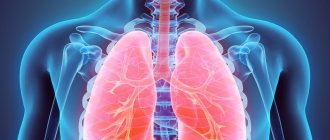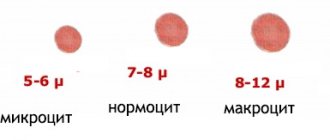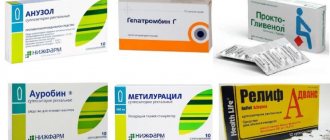According to the classification of the Russian Ministry of Health, hemorrhoids are divided into 4 stages. Effective treatment of hemorrhoids depends on accurately determining the extent of the disease. The symptoms of the disease increase in direct proportion to the progression of hemorrhoids.
At the first stage, the signs of the disease are smoothed out and not clearly expressed. Itching, infrequent and light bleeding - all this can be taken for a temporary disruption of the intestines.
But if external hemorrhoids are not treated, the problem will get worse. For the second stage of the disease, a characteristic symptom is prolapse of hemorrhoids.
A qualified proctologist will tell you how to stop hemorrhoids at this stage.
Signs of the second stage of hemorrhoids
The second stage of hemorrhoids is characterized by a significant increase in internal nodes with constant bleeding, which is accompanied by severe pain, itching and burning in the anus. At the second stage, the nodes fall out of the anus, which are reduced on their own.
The patient constantly has a sensation of a foreign body in the rectum, a feeling of incomplete bowel movement after defecation. At this time, constipation often appears, since enlarged hemorrhoids create obstacles for the exit of feces. In addition, the act of defecation due to trauma to the hemorrhoids is often very painful and can also contribute to their prolapse.
Bleeding from the anus becomes constant, its traces are clearly visible on toilet paper, in stool and on underwear. The mucus and blood released when the node is damaged irritates the intestinal mucosa, causing itching and burning in the anus.
The disease can be acute or chronic, and depending on the location of the hemorrhoids, hemorrhoids can be internal, external or mixed.
Desarterization
Termination of access of arterial blood supply to the hemorrhoidal node is the main goal of disarterization. Treatment of hemorrhoids is carried out by “flashing” the arteries that supply the node.
From two to six arteries are sutured by a proctologist using special, state-of-the-art equipment. The coloproctologist learns about the detection of a hemorrhoidal node by the signal that comes from the Doppler, a special sensor placed in the anal canal.
The doctor does the firmware through the anoscope, or more precisely, through its side window. The manipulation lasts up to half an hour, and the patient then needs up to two hours to recover. The procedure is done without general anesthesia.
In the day hospital, the patient is observed for one to two hours after treatment. One procedure is enough to obtain effective treatment for hemorrhoids using the disarterization method.
Causes of hemorrhoids
The development of the disease is promoted by many reasons, including hereditary predisposition, excess weight, physical inactivity or bad habits. In addition, hemorrhoids often result from professional activities associated with prolonged exposure to one position (pilots, drivers, office workers, etc.). Various disturbances in the functioning of the intestines, caused by poor nutrition and abuse of spicy, fatty, fried foods, and fast food, are a provoking factor of the disease. In women, the disease most often progresses during pregnancy and childbirth, and in men, the development of the disease can be caused by a passion for strength training and lifting weights.
At the second stage of hemorrhoids, patients often seek medical help, because the disease brings significant discomfort and its symptoms can no longer be ignored.
Types of Hemorrhoids
Based on the location of hemorrhoidal cones, 3 types of disease are distinguished. These include:
- internal hemorrhoids - here cavernous formations are located above the dentate line under the mucous membrane of the rectum in the area of the internal venous plexus;
- external - bumps appear below the dentate line and are easily detected during external examination;
- combined – is a combination of internal and external forms of pathology.
There are internal, external and mixed hemorrhoids
External and internal hemorrhoids of the 2nd degree are diagnosed in a hospital setting. A preliminary diagnosis is made by a doctor through a visual and digital examination. To obtain additional data, methods such as anoscopy, irrigoscopy, sigmoidoscopy, X-ray and other types of examination may be needed.
Treatment of second stage hemorrhoids
For second-stage hemorrhoids, the doctor may treat it conservatively, or the doctor will suggest minimally invasive manipulations - sclerotherapy, ligatures (suture ligation or ligation with latex rings). The question of choosing the most effective therapy is decided individually after examining the patient.
In the acute phase of the disease, only conservative treatment is carried out. Drug treatment is aimed at relieving symptoms of the disease and reducing inflammation. Anti-inflammatory, wound-healing, analgesic, hemostatic suppositories and ointments that improve local blood flow are used locally.
Patients with hemorrhoids are prescribed a special diet to normalize intestinal function, and are also recommended to adjust their lifestyle, physical activity, normalize weight, and give up bad habits, which will help avoid relapse of the disease.
On the medical basis, diagnosis and treatment of all forms of hemorrhoids are carried out using modern methods of therapy in proctology. Modern diagnostic equipment and specialists with many years of experience guarantee impeccable treatment results.
You no longer need to endure pain and experience constant discomfort. Contact a multidisciplinary medical center and our specialists will solve your delicate problems as quickly, tactfully and painlessly as possible. You can make an appointment by phone: +7 or using the online registration form on the website.
Laser vaporization
Effective treatment of hemorrhoids is impossible without the use of laser vaporization.
LHP technology (laser submucosal destruction) is possible thanks to the use of equipment from. Advantages of laser vaporization:
- no injuries;
- no postoperative stitches;
- relief of inflammation during the recovery period;
- minimal exposure time to hemorrhoidal formation;
- short period of rehabilitation;
- reduction of relapses.
The essence of the technique is to evaporate the hemorrhoidal node with a laser.
The patient does not feel pain during the procedure and recovers quickly. The use of special proctological underwear and local anesthetics are additional means to create patient comfort during laser vaporization. How to stop hemorrhoids without pain and surgery? There is only one answer - to use the latest technologies to combat the problem.
Why are hemorrhoids dangerous?
Many patients associate the disease with only pain during bowel movements and bleeding, and therefore do not attach much importance to it in the early stages. Meanwhile, it is developing rapidly. And if yesterday everything was limited to discomfort when going to the toilet, tomorrow it may result in:
- Thrombosis and suppuration.
- Inflammation and swelling of the rectum.
- Formation of fistulas.
- Acute paraproctitis.
- Other diseases that cannot be cured without surgery.
Methods of treating the disease
Treatment of grade 2 hemorrhoids includes an integrated approach using drug therapy, auxiliary methods of traditional treatment, and minimally invasive surgical techniques. In addition, the patient needs to adjust his lifestyle, adhere to a certain diet, and perform physical exercises recommended by the attending physician. Second stage therapy is carried out more often at home after diagnosis and selection of the type of treatment for a particular patient.
Use of medications
Treatment of stage 2 hemorrhoids with medications involves the use of suppositories, ointments and oral medications, the action of which is aimed at reducing the symptoms of the disease and preventing complications.
When choosing a particular medicine, the doctor is guided by which symptom predominates in the patient.
Painkillers
In case of severe pain, a person is prescribed painkillers in the form of suppositories, ointments and tablets. These include:
- Anestezol suppositories - relieve pain and inflammation well, promote healing of anal fissures;
- Relief ointment - a drug based on shark liver oil, rarely causes side effects, copes well with most manifestations of hemorrhoids at all stages;
- Procto-Glivenol suppositories - the medicine relieves pain, promotes blood circulation in the pelvic organs, strengthens the walls of blood vessels, increases their elasticity. Candles are used in courses as prescribed by a proctologist;
- suppositories with adrenaline - used in patients with acute illness, have a powerful analgesic effect;
- Neo-Anuzol suppositories – have a bactericidal, anti-inflammatory effect, relieve pain, redness and swelling.
Procto-Glivenol perfectly eliminates unpleasant symptoms of the disease
In addition to drugs in the form of rectal suppositories, ointments are very popular. The following medications have a good effect:
- Heparin ointment – anesthetizes, relieves itching, redness, irritability;
- Proctosan ointment – contains bismuth, thanks to which the drug quickly eliminates pain and other manifestations of hemorrhoids;
- Levomekol is a safe drug that is prescribed to patients for the treatment of varicose veins in the rectal area, including after surgical removal of hemorrhoids.
Important! Painkillers for hemorrhoids should be used only on the recommendation of the attending physician; self-medication often causes serious consequences.
Anti-bleeding drugs
If the patient has a predominant sign of pathology such as bleeding, he may be prescribed the following medications:
- suppositories with propolis - stop bleeding due to the presence of propolis in its composition, which has a positive effect on blood clotting, preventing bleeding;
- Methyluracil ointment - the medicine stops bleeding and promotes the healing of anal fissures;
- Natalsid suppositories - used for mild or intense bleeding, help relieve the inflammatory process;
- suppositories with sea buckthorn oil - heal wounds and microdamages well, eliminate mild and moderate bleeding.
Natalsid suppositories are often prescribed to stop bleeding in grade 2 hemorrhoids.
Among oral medications, tablets are used: Detralex, Phlebodia, Hemoroidin and other drugs intended to strengthen blood vessels, treat bleeding and other signs of the disease.
Why do hemorrhoids develop?
Hemorrhoids can occur for completely different reasons.
Most often, the factors that caused changes in blood supply, stagnation and formation of hemorrhoids are:
- sedentary lifestyle. People who, due to their profession or other reasons, move little, are more susceptible to hemorrhoids. Deterioration of pelvic blood flow is a consequence of prolonged sitting or standing, which provokes the formation of hemorrhoids;
- hard physical labor. Lifting weights and other stress on the body can cause the development of the disease;
- any disturbances in the process of defecation. Diarrhea and diarrhea cause changes in pressure in the veins, so hemorrhoids can form;
- overheating or hypothermia of the body. They can contribute to the deterioration of blood supply in the pelvic area;
- spicy food, alcohol. They cause blood flow to the rectum, which can cause its tissues to expand. If there is insufficient fiber in the diet, constipation is possible; excessive fat content can cause diarrhea;
- anal sex leading to injury to the rectum;
- the presence of other diseases, including neoplasms in the pelvic area, liver disease.










